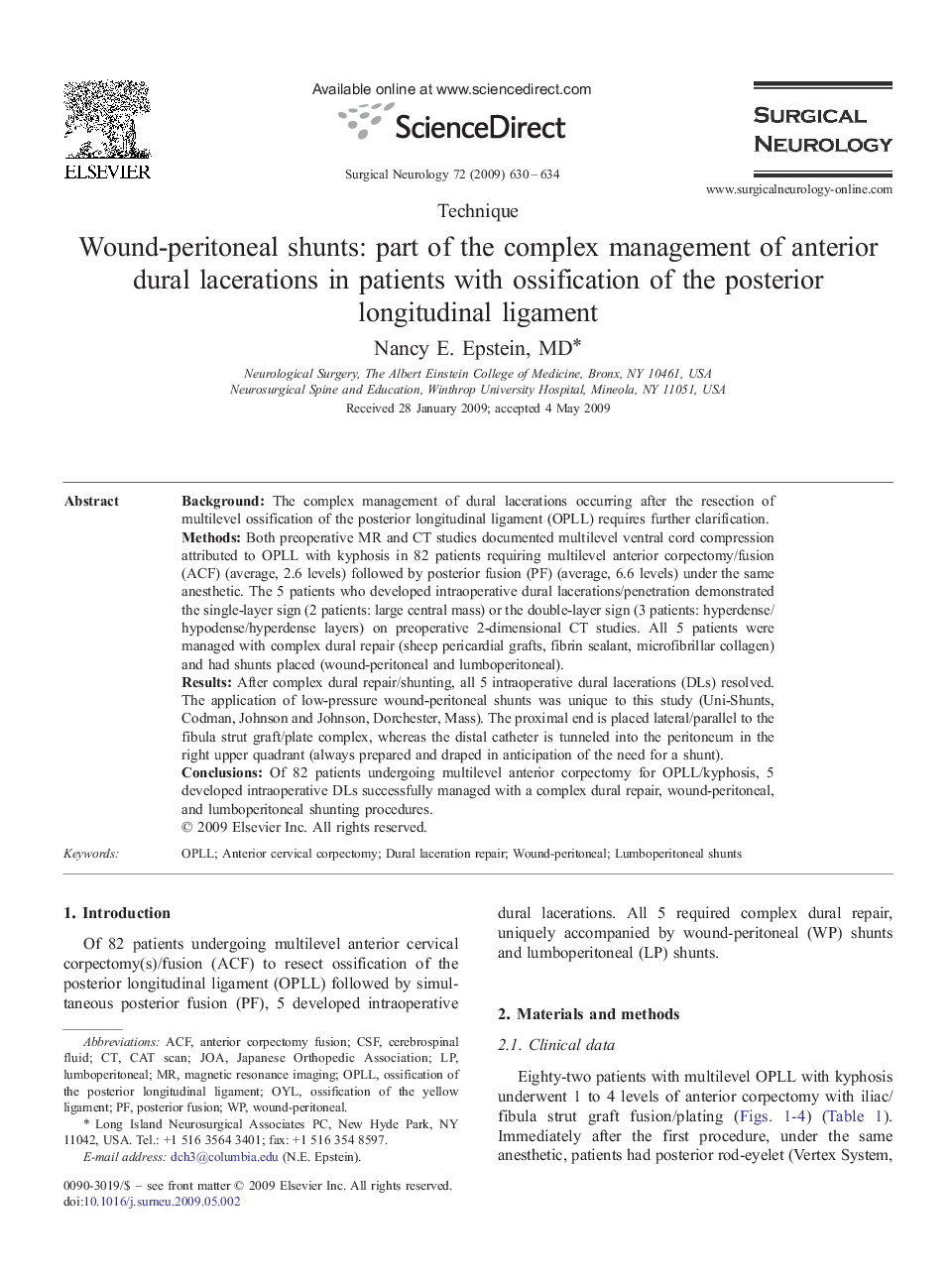| Article ID | Journal | Published Year | Pages | File Type |
|---|---|---|---|---|
| 3092021 | Surgical Neurology | 2009 | 5 Pages |
BackgroundThe complex management of dural lacerations occurring after the resection of multilevel ossification of the posterior longitudinal ligament (OPLL) requires further clarification.MethodsBoth preoperative MR and CT studies documented multilevel ventral cord compression attributed to OPLL with kyphosis in 82 patients requiring multilevel anterior corpectomy/fusion (ACF) (average, 2.6 levels) followed by posterior fusion (PF) (average, 6.6 levels) under the same anesthetic. The 5 patients who developed intraoperative dural lacerations/penetration demonstrated the single-layer sign (2 patients: large central mass) or the double-layer sign (3 patients: hyperdense/hypodense/hyperdense layers) on preoperative 2-dimensional CT studies. All 5 patients were managed with complex dural repair (sheep pericardial grafts, fibrin sealant, microfibrillar collagen) and had shunts placed (wound-peritoneal and lumboperitoneal).ResultsAfter complex dural repair/shunting, all 5 intraoperative dural lacerations (DLs) resolved. The application of low-pressure wound-peritoneal shunts was unique to this study (Uni-Shunts, Codman, Johnson and Johnson, Dorchester, Mass). The proximal end is placed lateral/parallel to the fibula strut graft/plate complex, whereas the distal catheter is tunneled into the peritoneum in the right upper quadrant (always prepared and draped in anticipation of the need for a shunt).ConclusionsOf 82 patients undergoing multilevel anterior corpectomy for OPLL/kyphosis, 5 developed intraoperative DLs successfully managed with a complex dural repair, wound-peritoneal, and lumboperitoneal shunting procedures.
